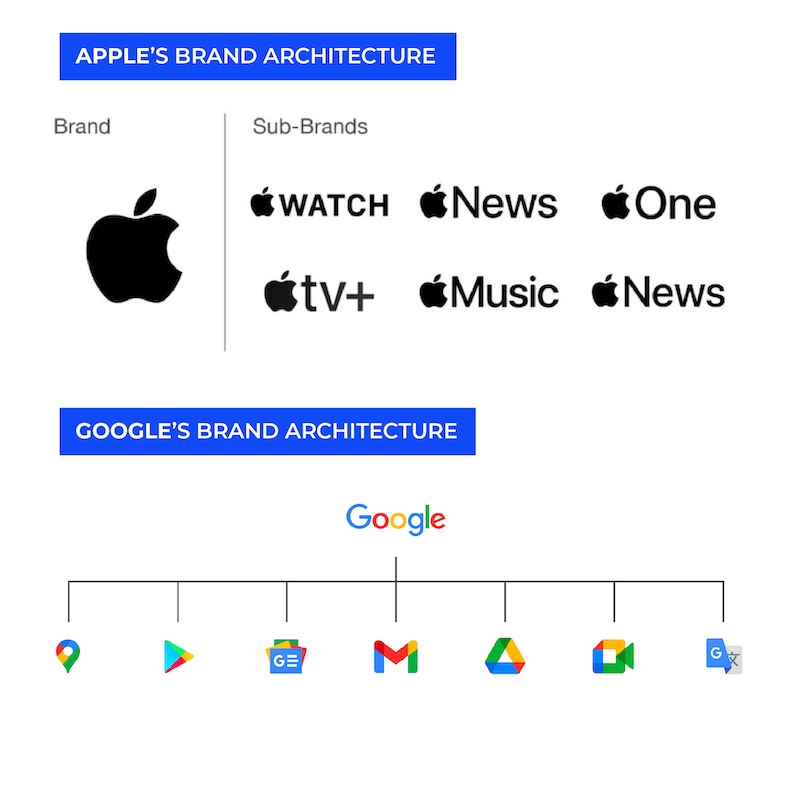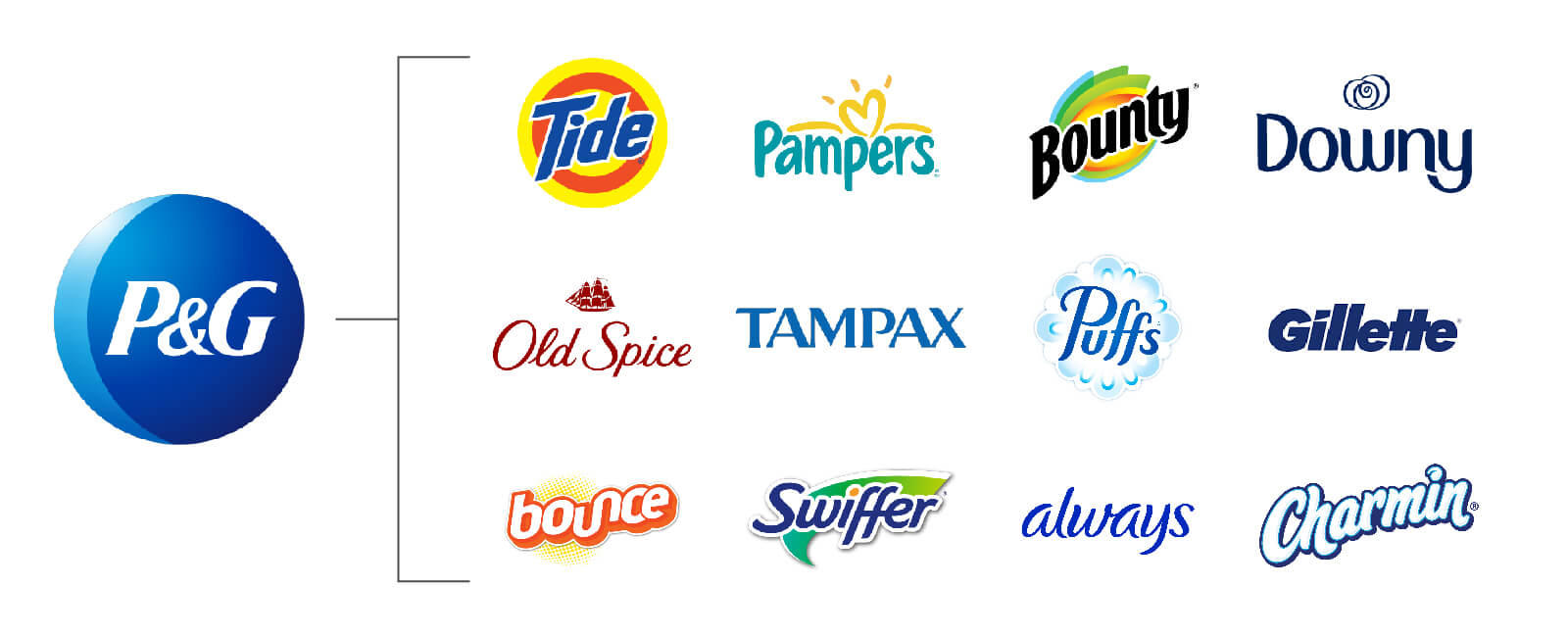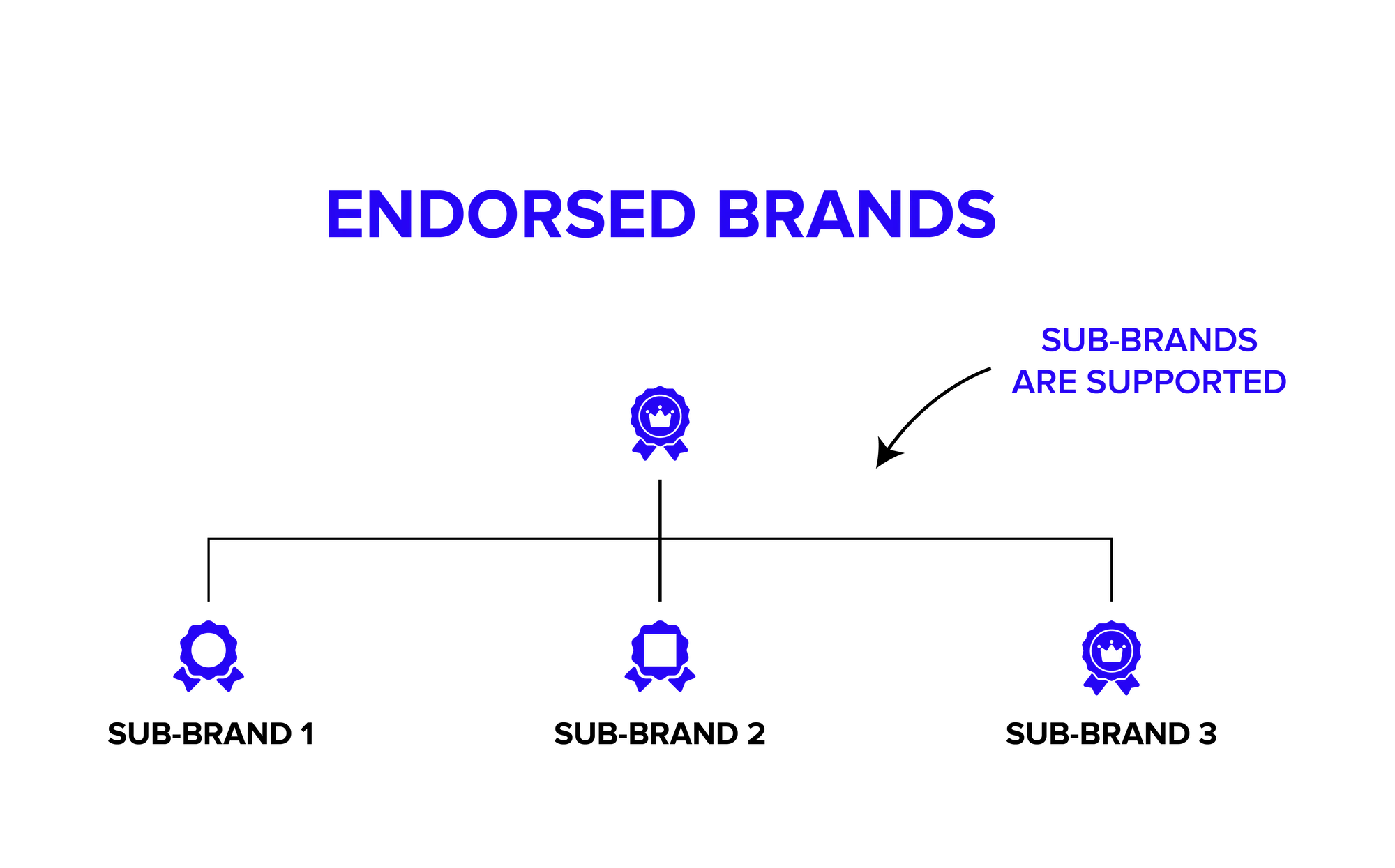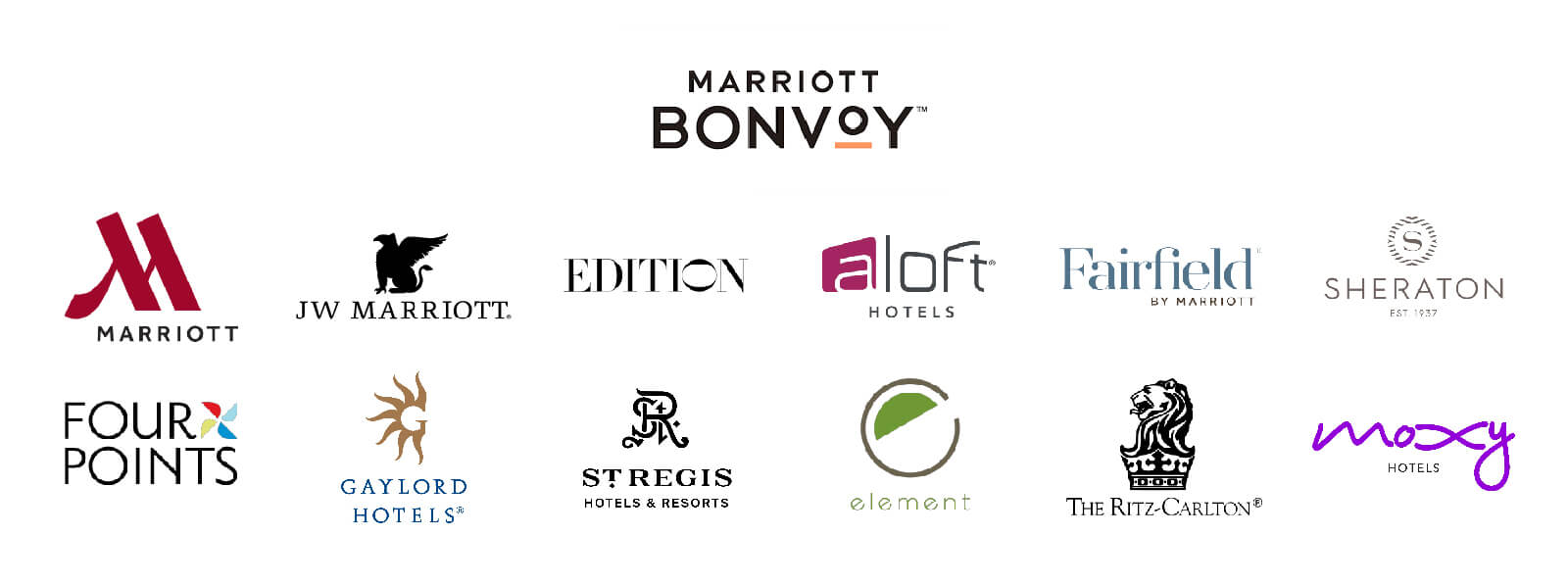This is where brand architecture comes into play. By creating a clear and effective brand architecture, you can reduce confusion for consumers and develop a strong brand strategy. In this article, we’ll take a closer look at what brand architecture is and why it’s essential for your business’s success.
What is Brand Architecture?
Brand architecture refers to the hierarchy and organization of a company’s brands, products, and services. It is used to describe how these different elements can be grouped together in a way that makes sense both from a marketing perspective and for consumers.
In this way, brand architecture is about creating a structure for your brands that will help you better communicate what they have to offer and how they fit into your overall business strategy.
Brand architecture can be used as an internal tool for helping employees understand how their products and services fit into the overall company brand image, but it also serves as an external tool for communicating with customers about what each product in your portfolio has to offer.
For example, if you’re launching several new lines of clothing under one brand name or umbrella, you might want to use different colors or symbols on each item to help differentiate them from one another. You could also use different shapes or sizes to make it easier for customers to identify which items are meant for men, women or children (even if they’re all marketed under the same name).
Why is Brand Architecture Important for business owners?
For business owners, having a well-defined brand architecture is crucial in building a strong brand identity. It helps to establish a clear and consistent branding strategy that defines who you are as a company and what value you offer to your customers. In addition, having a strong brand architecture can provide numerous benefits to your business, including:
Benefit of Having Strong Brand Architecture
Clarity and Consistency:
Brand architecture ensures that customers understand the relationship between a company’s various brands. This makes it easier for them to navigate the brand portfolio and choose the right products and services. It also helps to ensure that the company’s visual identity and messaging are consistent across all of its brands.
Efficient Resource Allocation:
By having a clear brand architecture, companies can allocate their resources more efficiently. They can focus their marketing efforts and resources on the brands that are most important to their business strategy. This also helps to ensure that marketing and branding efforts are not duplicated across different brands.
Competitive Advantage:
Strong brand architecture can give a company a competitive advantage. It can help to differentiate the company’s brands from those of its competitors, making them more appealing to customers. It can also help to establish a company’s reputation as a leader in its industry.
Improved Brand Recognition
A well-defined brand architecture can help improve brand recognition. It allows your customers to easily recognize your products or services, even if they are marketed under different brand names. This can lead to increased brand loyalty and a stronger connection between your brand and your customers.
Types of Brand Architectures
1. Branded House or Monolithic

Branded houses are designations used in the branding and marketing of products or services. Branded houses are one way to express brand architecture. In the case of an extended branded house, all brand activity is organized under one parent brand umbrella. There may be individual brand designations for different product and service lines, but all roads lead back to the parent brand.
Very simply put, branded houses are meant to organize all brand activity under a single umbrella (a single company) with one logo representing that house. This means that there is no distinction between products or services under each brand name, except that they may have different names. It also means that the consumer has no idea which brands represent which lines of business for any given company because everything is housed under one parent brand name.
Advantages of Branded House Brand Architecture
- Requires minimal effort from marketing team
- Easy to implement
- Consistent branding across all lines
- High brand equity (if parent brand has strong reputation)
- High operational efficiency (only one brand to promote)
Disadvantages of Branded House Brand Architecture
- Tough to differentiate products from competition if parent brand doesn’t have high brand equity or unique value proposition
- Sub-brands may not be able to stand on their own without parent company’s support/reputation
Branded House Examples

- Apple Company
Apple is a prime example of a branded house company. The company uses its single brand name across all of its products, including the iPhone, iPad, and MacBook. Apple’s branding is consistent and easily recognizable, helping to build a strong brand identity and customer loyalty.
Google is a technology company that uses a branded house approach. The company uses its single brand name across all of its products and services, including Google Search, Google Maps, and Google Drive. Google’s branding is consistent and focuses on its colorful logo, making it easy to recognize and remember.
2. House of Brands or Pluralistic

House of Brands is a multi-brand strategy in which different brands are created for each product, service or business unit that is then marketed and sold separately. The brands under the House of Brands strategy typically have no visible connection to their parent company.
House of Brands is useful when you want to highlight the distinct benefits of a family of products. This allows you to communicate each brand’s value independently, and to be more flexible with your marketing campaigns for each product.
Advantages of the House of Brands
- Flexibility
- Targeted messaging
- Reduced risk
- Independent branding
In a house of brands, each product or service can have its own distinct identity, allowing for greater flexibility in marketing and branding strategies.
By having separate brands for each product or service, companies can create more targeted messaging and appeal to specific customer segments.
If one product or brand fails, it doesn’t necessarily impact the success of other products or brands under the company umbrella.
Each brand can stand on its own, allowing for greater differentiation and competition against other companies’ products.
Disadvantages of the House of Brands
- Higher costs
- Lack of brand recognition
- Difficult to manage
- Potential confusion
The house of brands approach requires more investment in branding and marketing efforts for each individual brand, which can be more costly than a single, unified brand approach.
If the company’s individual brands are not well-known, it can be difficult to create brand recognition and customer loyalty.
A house of brands approach can be more challenging to manage than a branded house approach, as there are multiple brands and products to oversee.
If the individual brands are not clearly differentiated from each other, customers may become confused or uncertain about which brand or product to choose.
House of Brands Examples

Procter & Gamble (P&G): P&G is a consumer goods company that owns multiple brands across various categories, such as Tide laundry detergent, Pampers diapers, Gillette razors, and Crest toothpaste.
3. Endorsed Brand

In an endorsed brand structure, brands and their products are sanctioned by the parent. These individual brands collectively take on greater market presence than their parent brand alone and represent something distinct under the parent’s banner. The parent’s endorsement denotes a certain level of expected delivery, but does not dictate each endorsed brand’s actions.
This is a common approach for corporations that want to leverage the loyalty of their customer base while also allowing them to provide a diverse range of products with their own unique value propositions and product offerings.
Advantages of Endorsed Brands
The advantages of endorsed brands include a unique brand promise, individual brands prioritized for faster market penetration, and quality assurance inherited from the parent brand.
Disadvantages of Endorsed Brands
The disadvantages of endorsed brands include the potential dilution of the parent brand, negative spillover from other brands and inefficiencies inherent in multiple brand management.
Example of Endorsed Brands

For example, Marriott International is the parent company for many different hotels under its umbrella, including JW Marriott, Renaissance Hotels, and Fairfield Inn & Suites. Customers who identify with Marriott’s core values have many choices when it comes to choosing where they stay (location, amenities, price point). Although each hotel provides distinctly different experiences, they all come with the promise of high-quality service and standards.
Key Considerations When Choosing a Brand Architecture
for Business Owners
1. Business Goals
Your brand architecture should align with your business goals. Consider whether you want to expand into new markets, introduce new products or services, or consolidate your existing offerings.
2. Target Audience
Your brand architecture should be tailored to your target audience. Consider what types of products or services your customers are looking for and how they prefer to engage with your brand.
3. Industry and Competition
The type of brand architecture you choose should take into account your industry and competition. Consider how your competitors are positioning themselves in the market and what strategies they are using to differentiate themselves.
4. Brand Recognition
If your company already has a well-known brand, it may make sense to use a branded house approach to capitalize on that recognition. If you are introducing new products or services, a house of brands approach may be more appropriate.
5. Marketing and Branding Budgets
Consider how much you are willing to invest in branding and marketing efforts for each brand or product. A house of brands approach may require more investment in individual branding and marketing efforts.
6. Company Structure
Your company’s structure and organization should also be taken into account when choosing a brand architecture. Consider how each brand or product will be managed and who will be responsible for marketing and branding efforts.
Conclusion
In sum, there are several brand architectures shown to work in the marketplace. The success of each structure will depend on the particular needs of each company and its brand/portfolio strategy. Companies should evaluate the options available within each category in order to determine which is right for them and their portfolio before making a decision. For more information on how to determine the right brand architecture for your company, Get Contact with Neu Entity, as your branding agency partner.
Related Articles
Let’s Talk!
If what you see here is relevant for you and can help you grow your business or organisation, we’d love to discuss further with you. Drop us a message or schedule an appointment with us.




